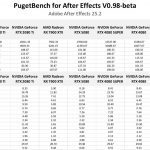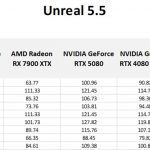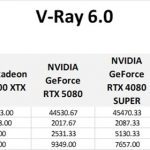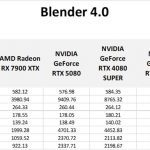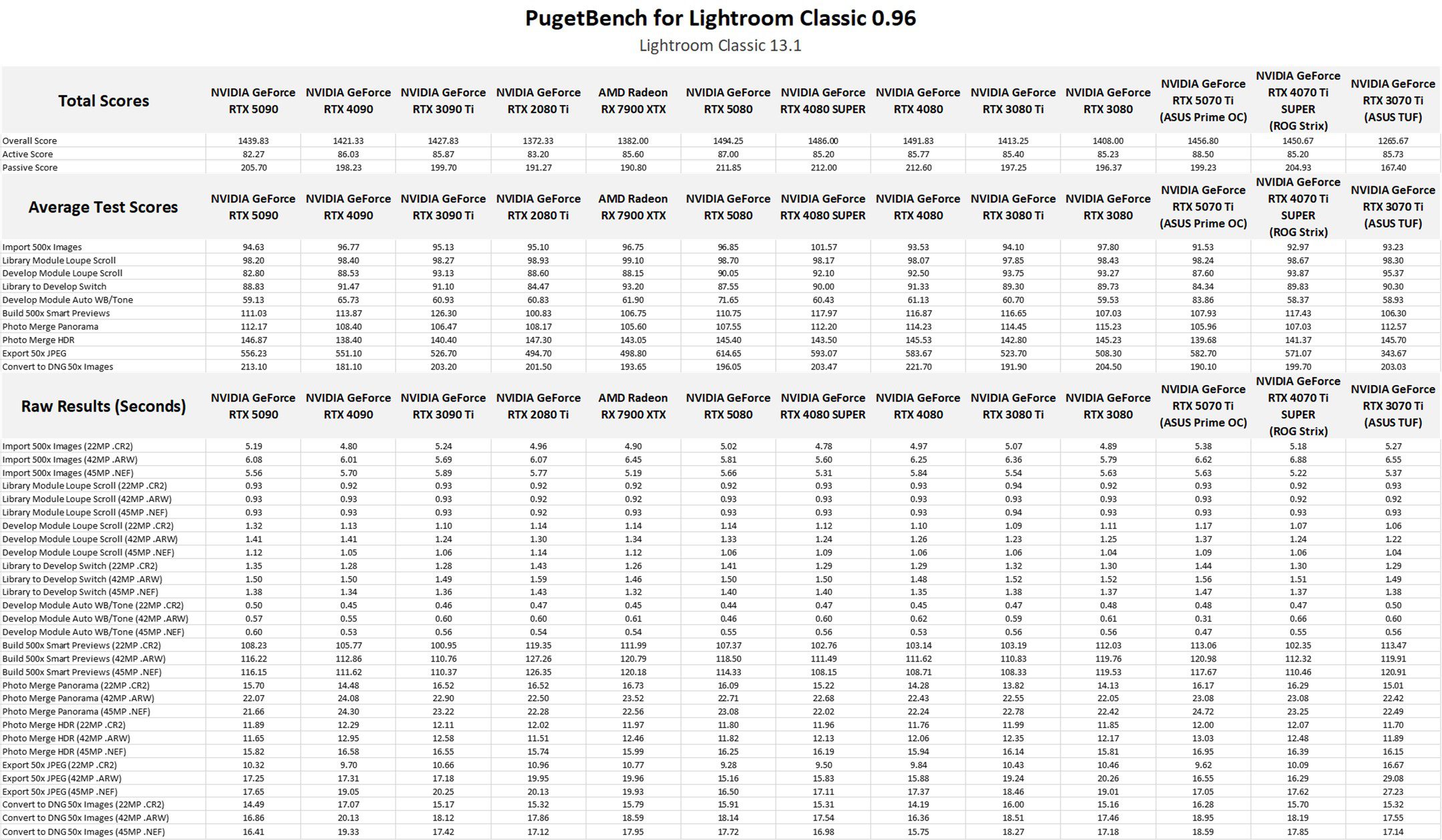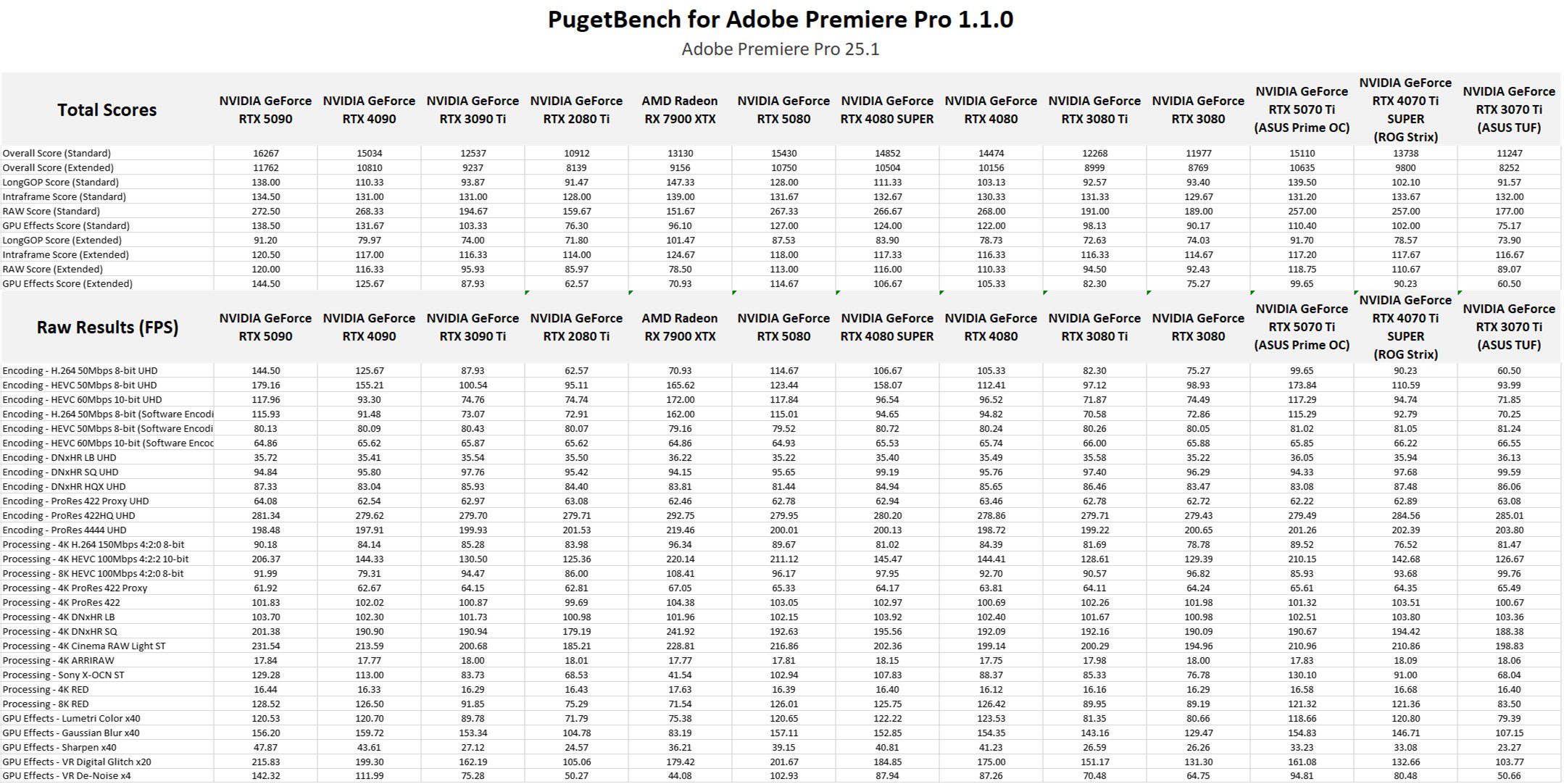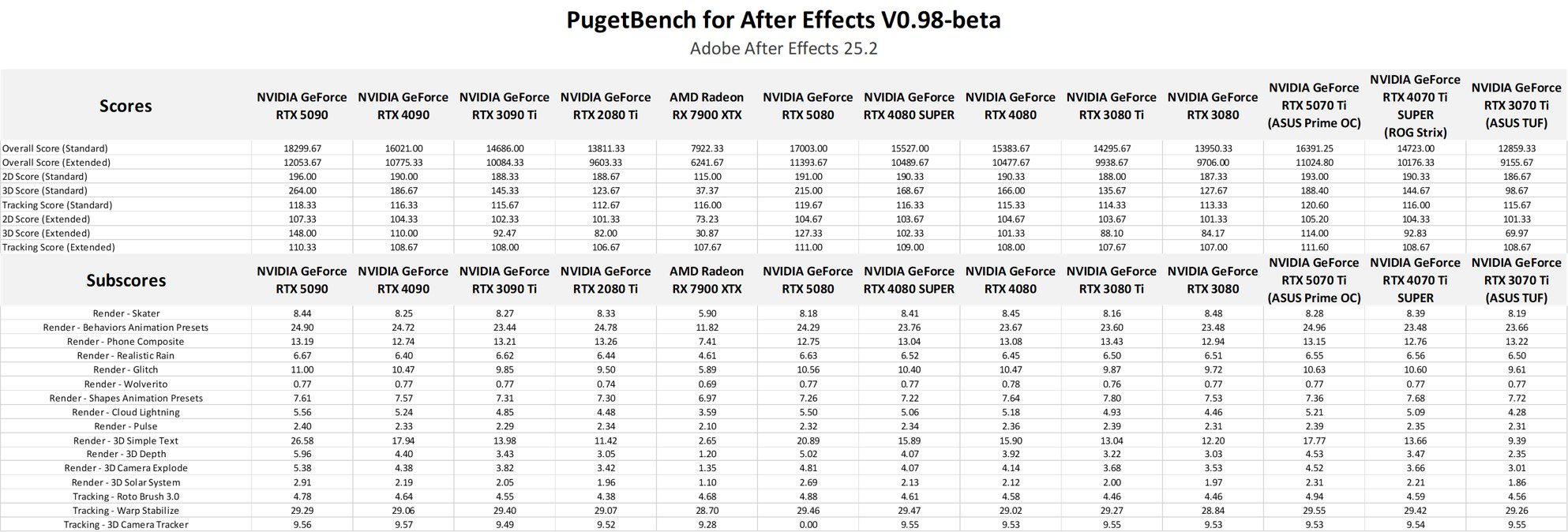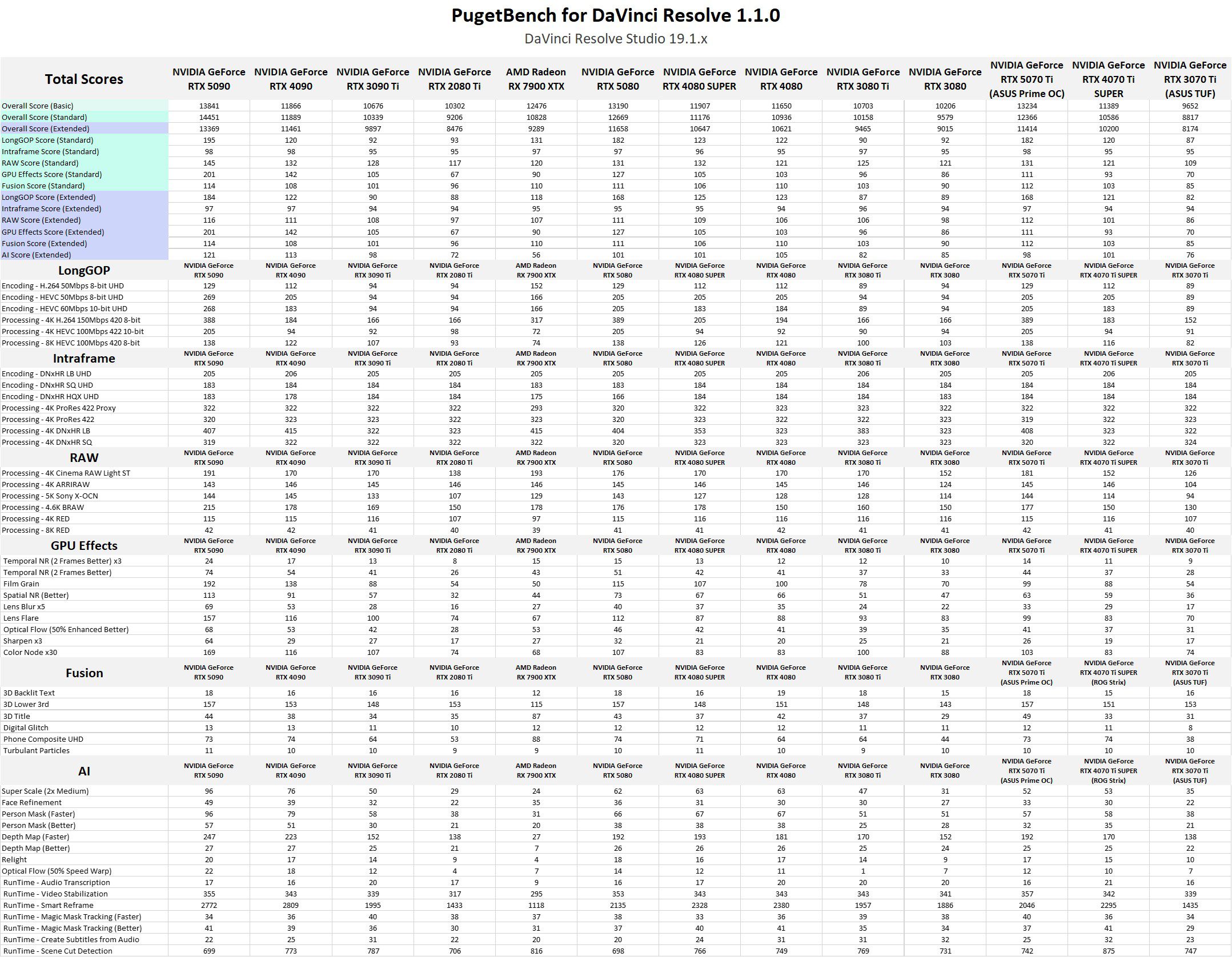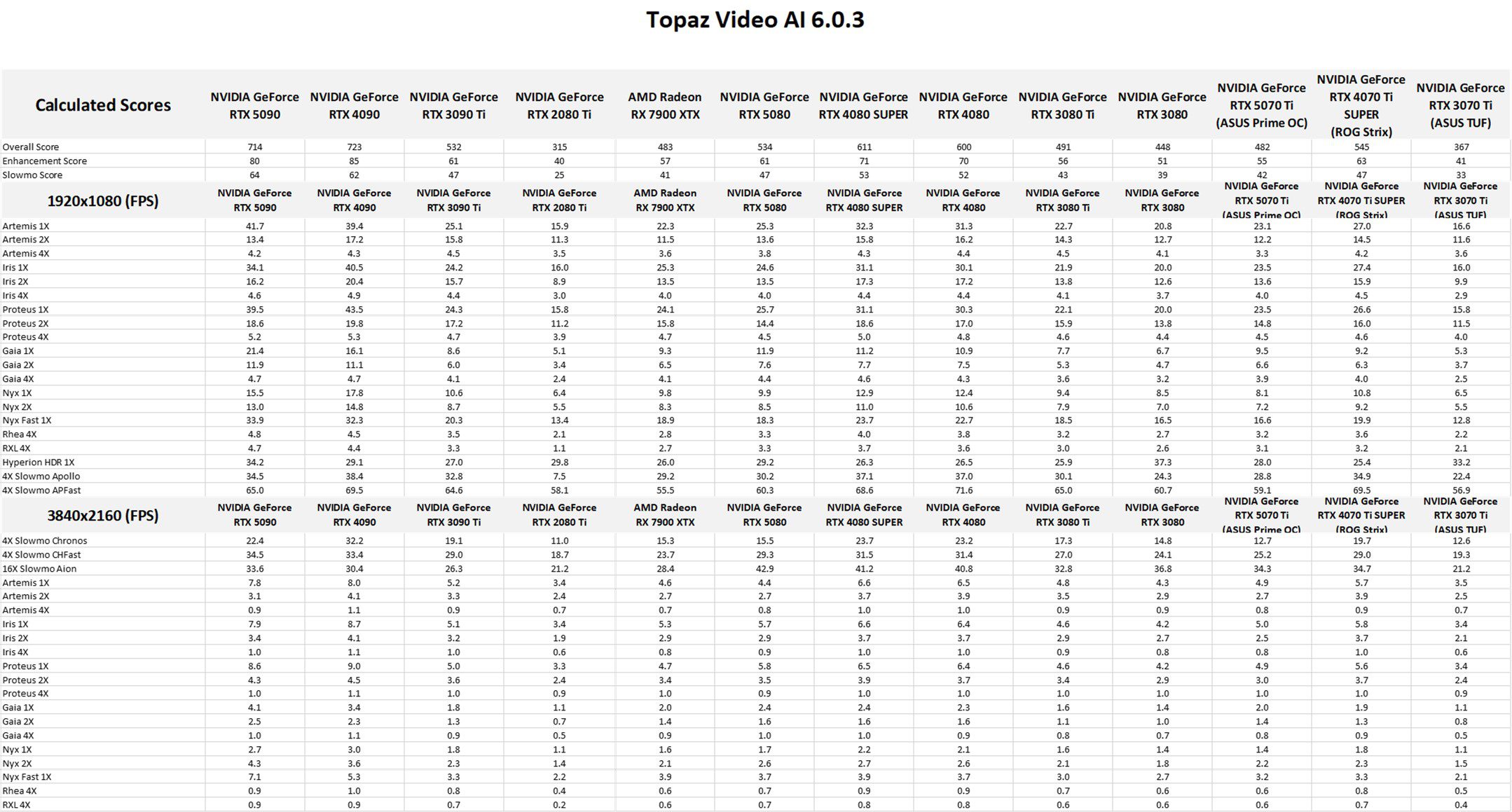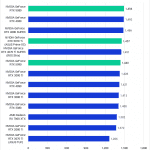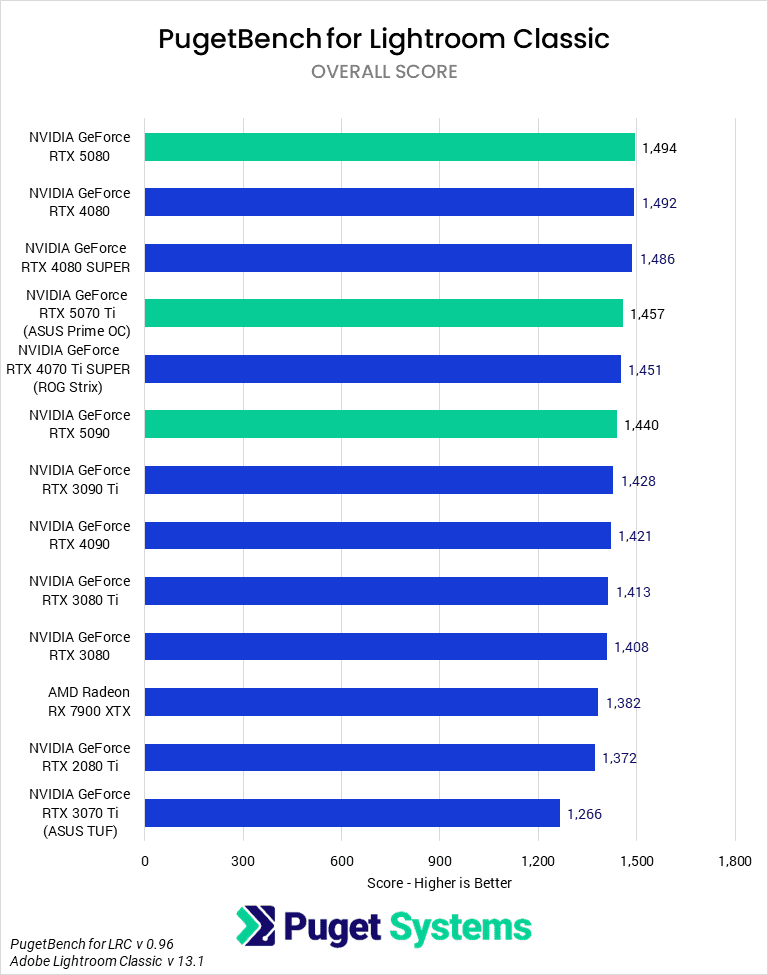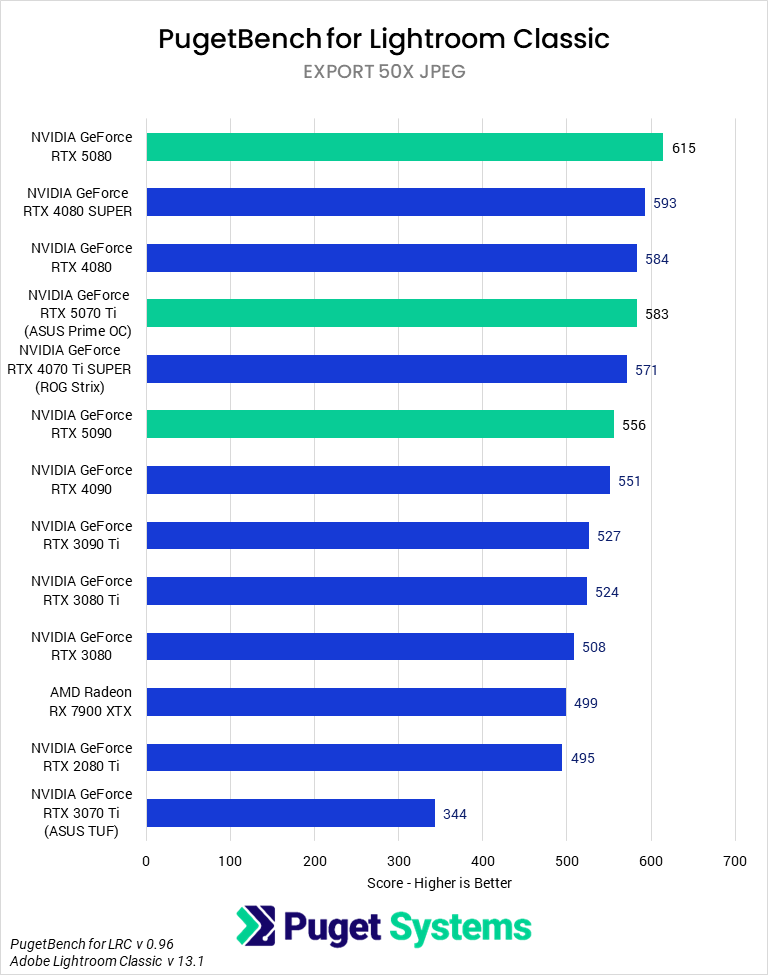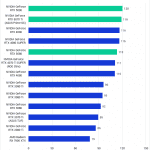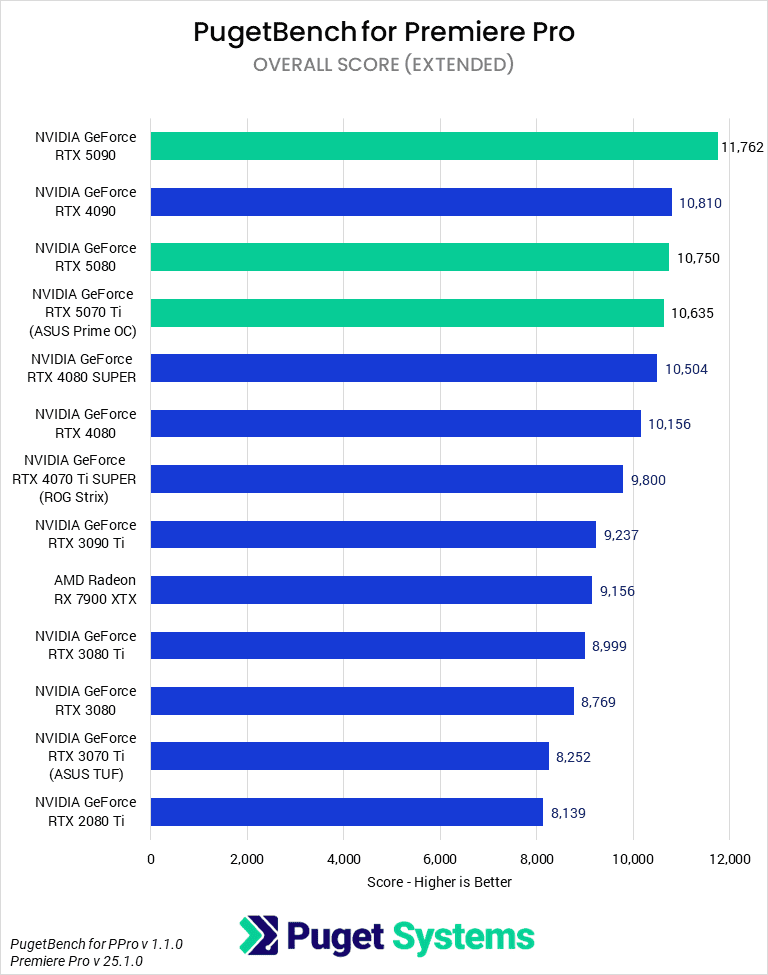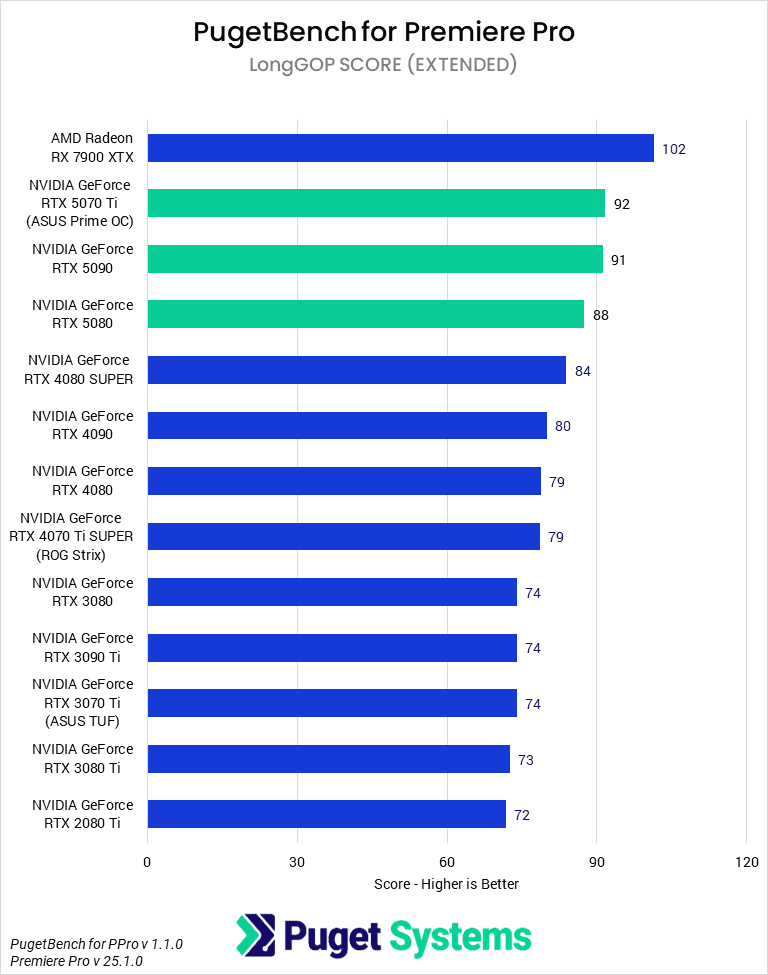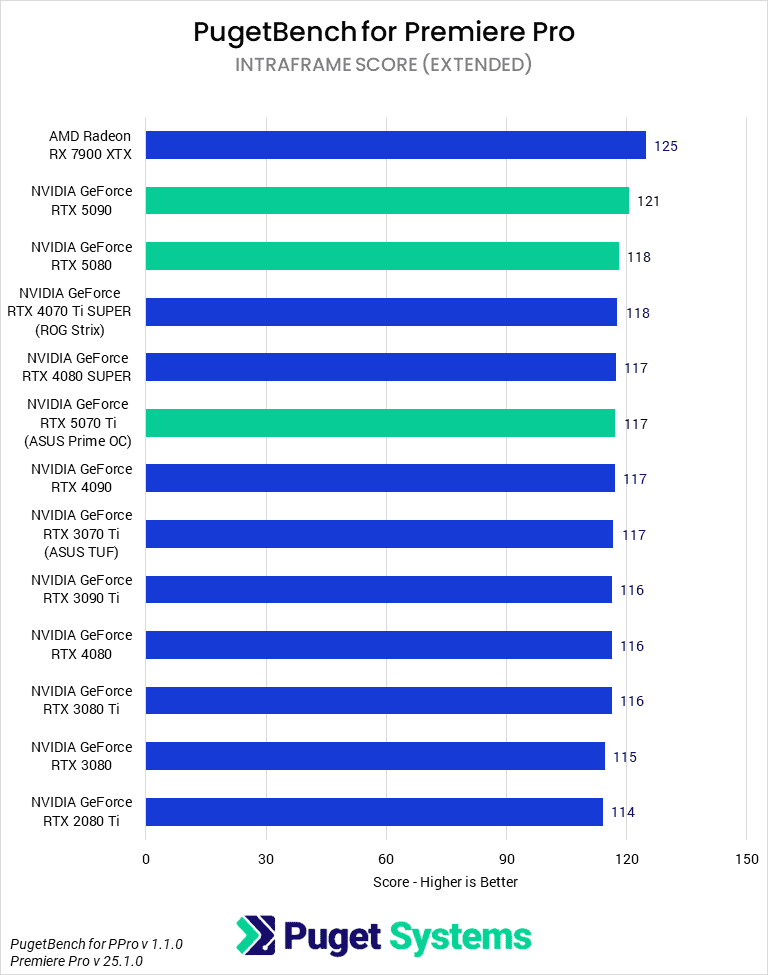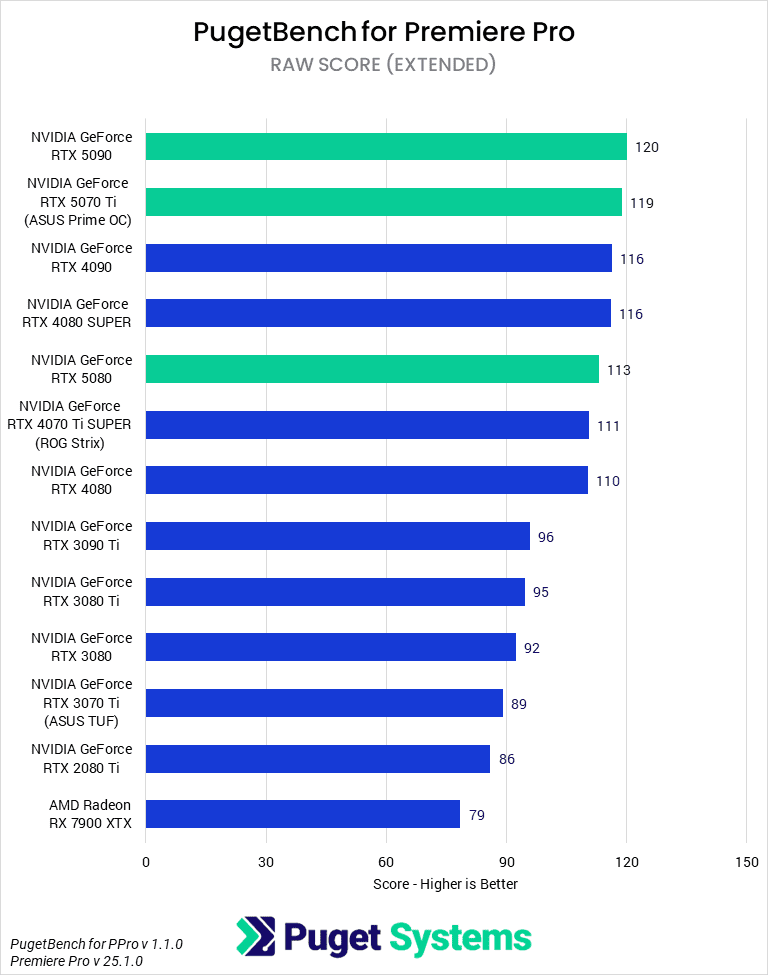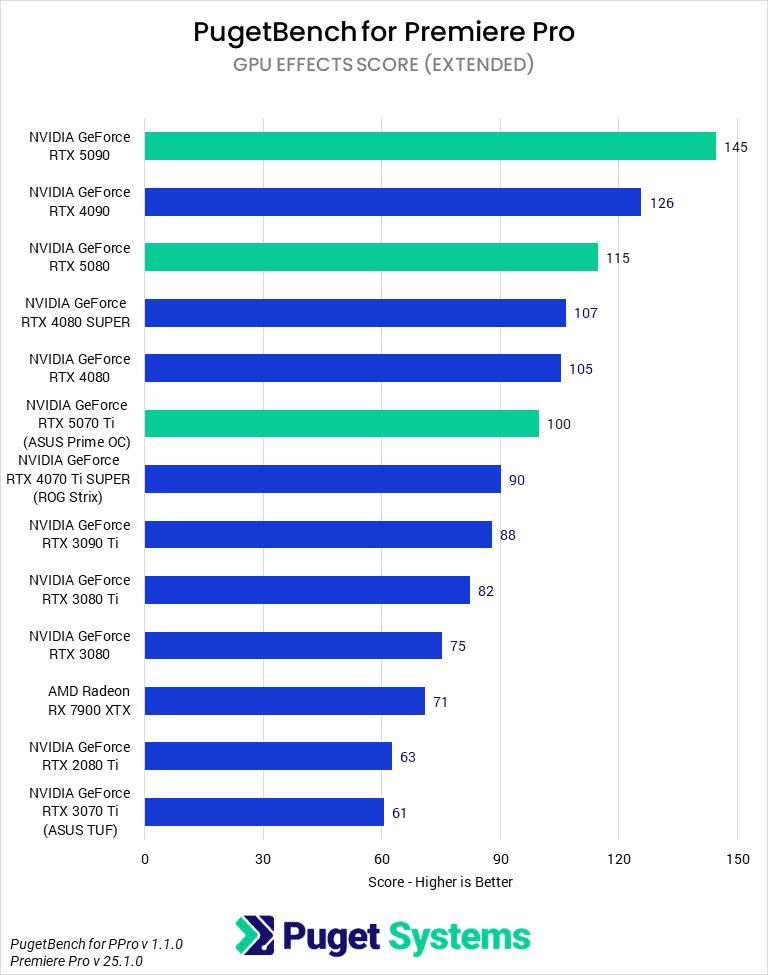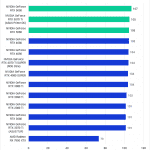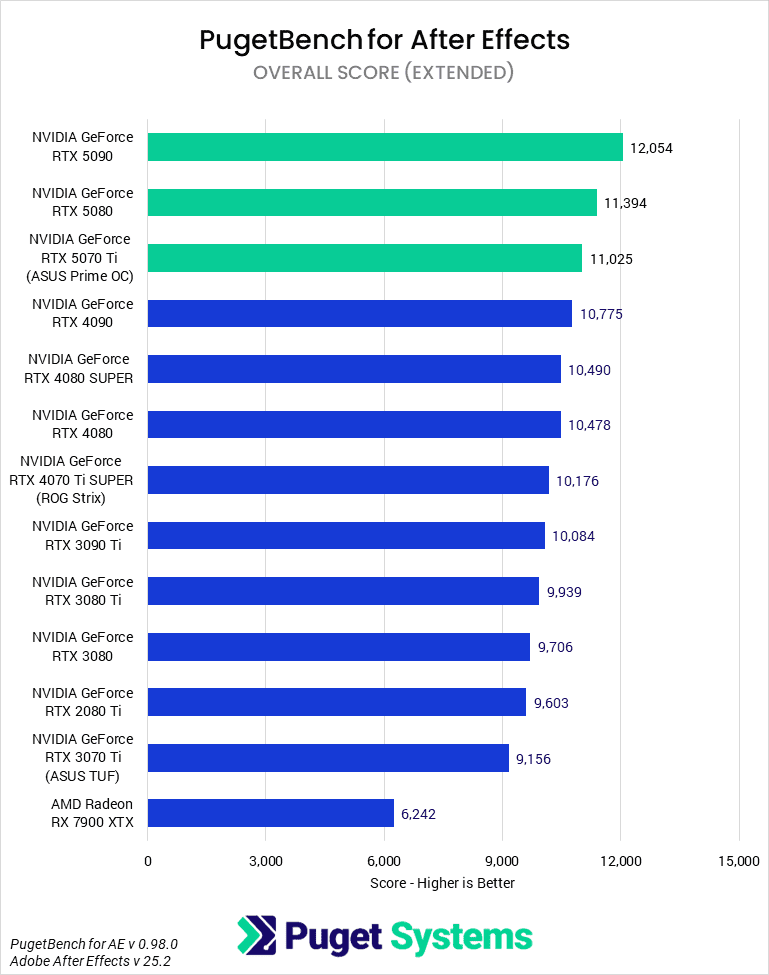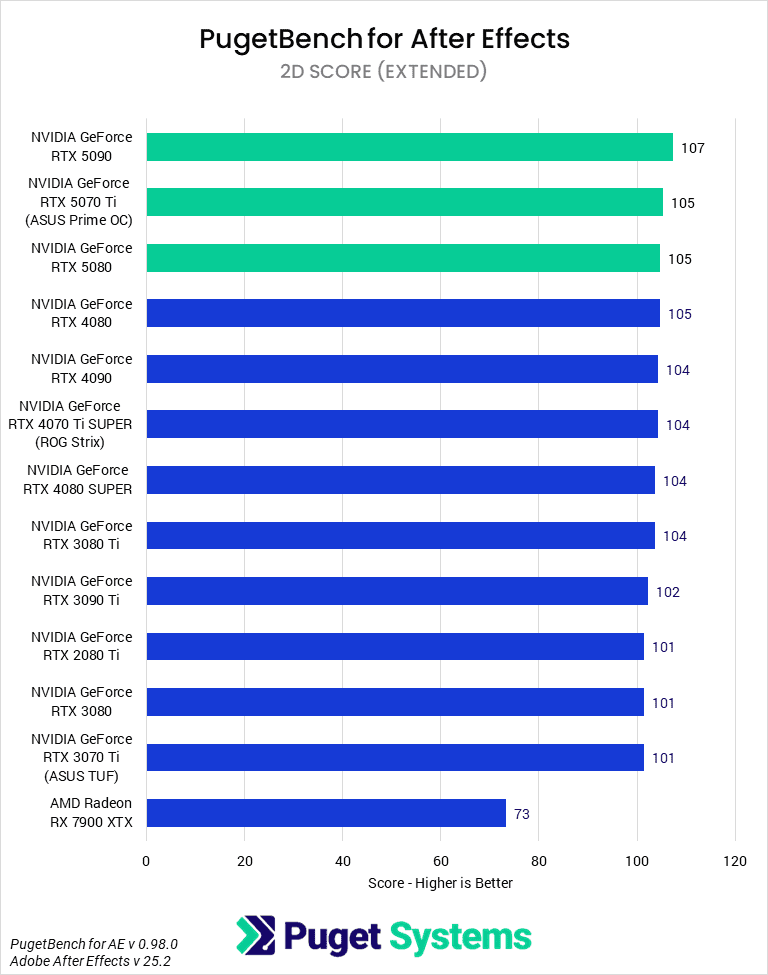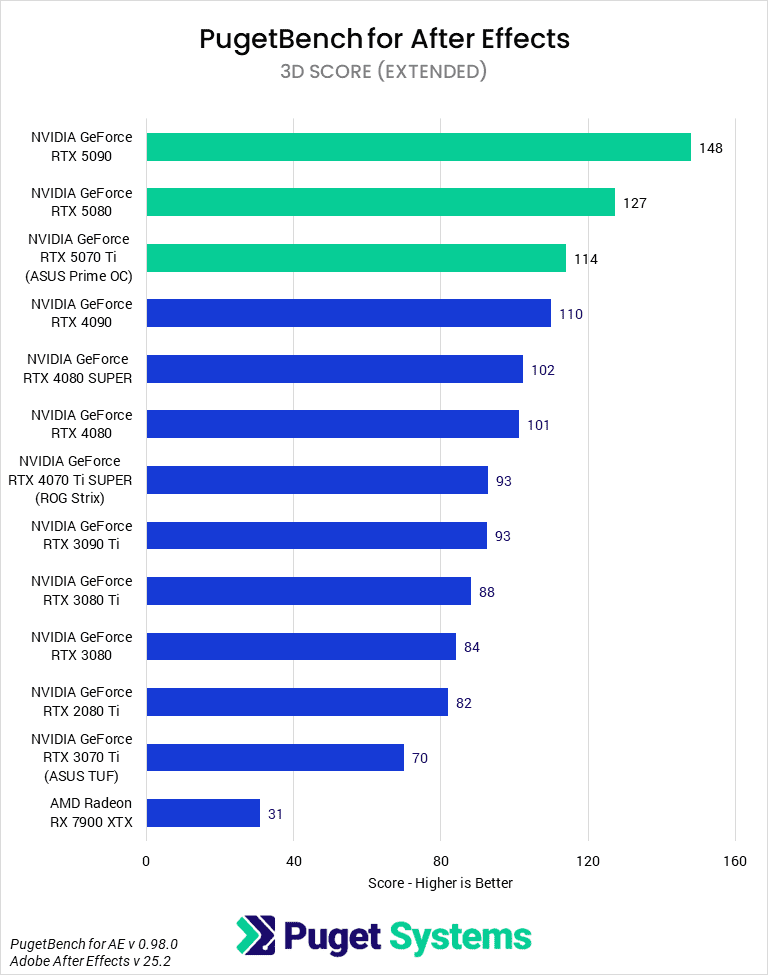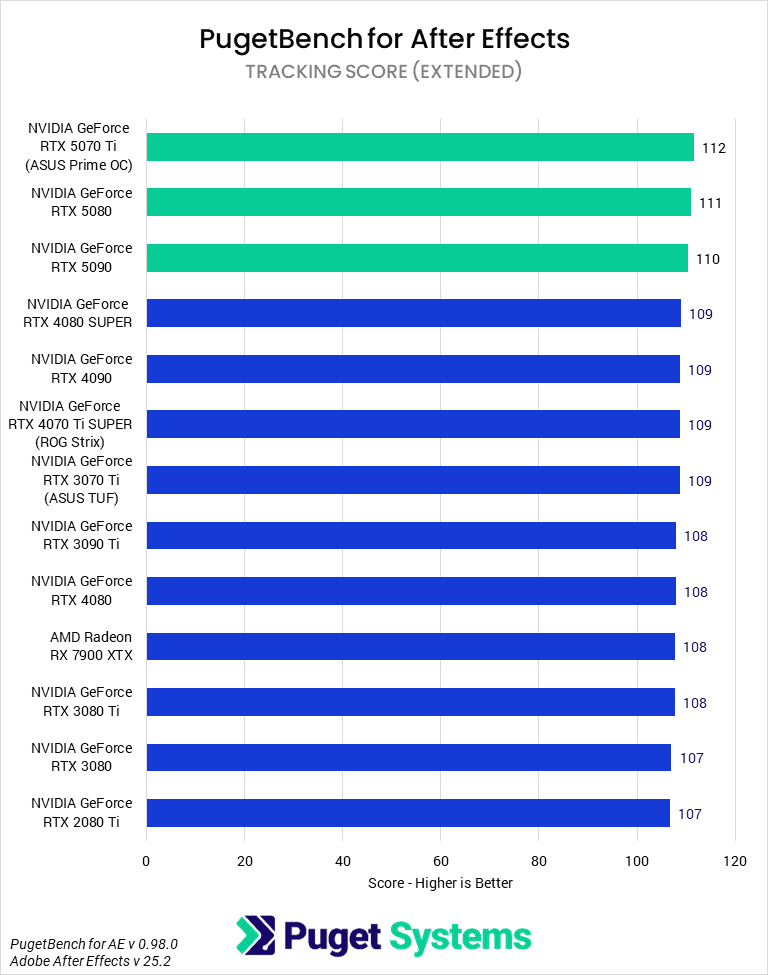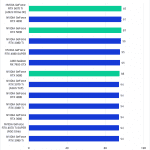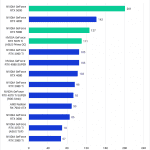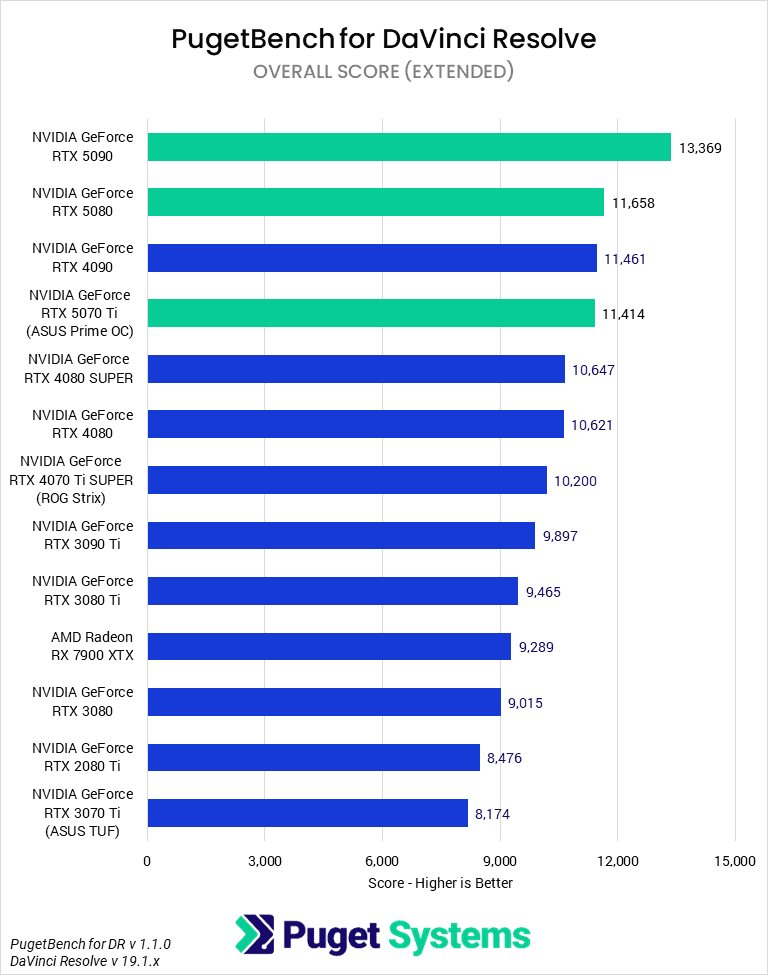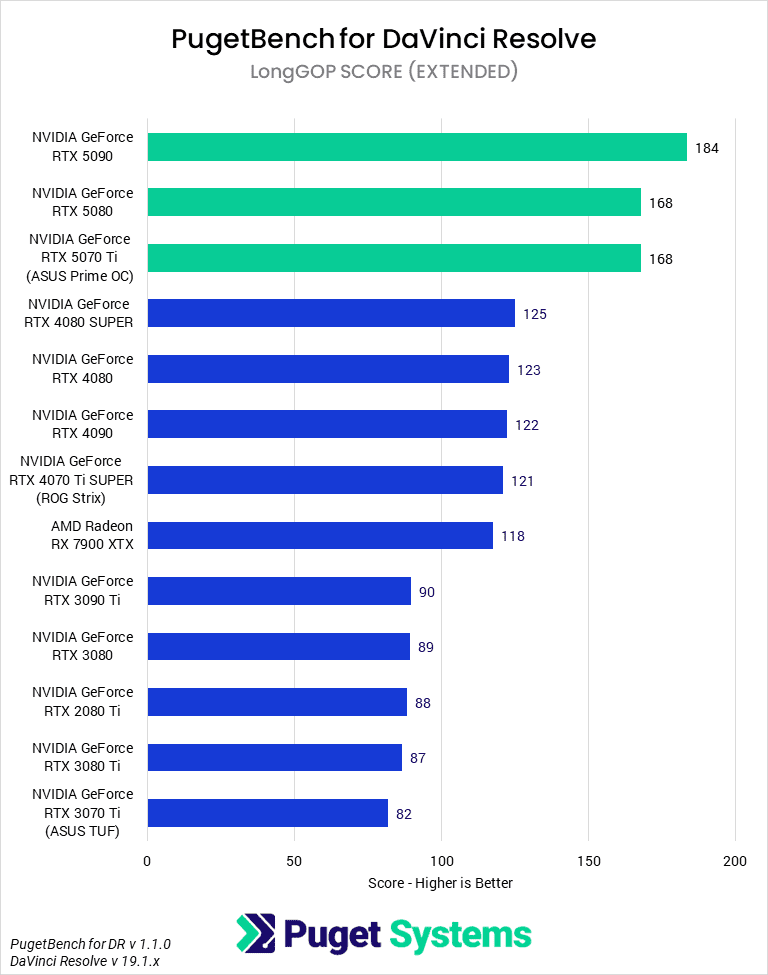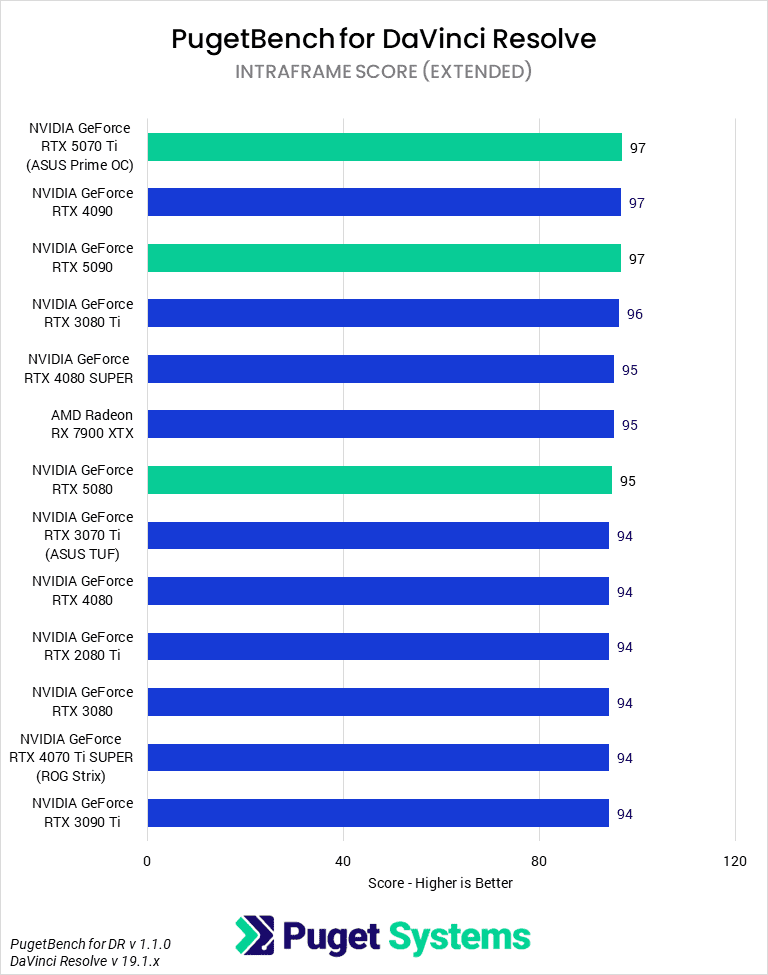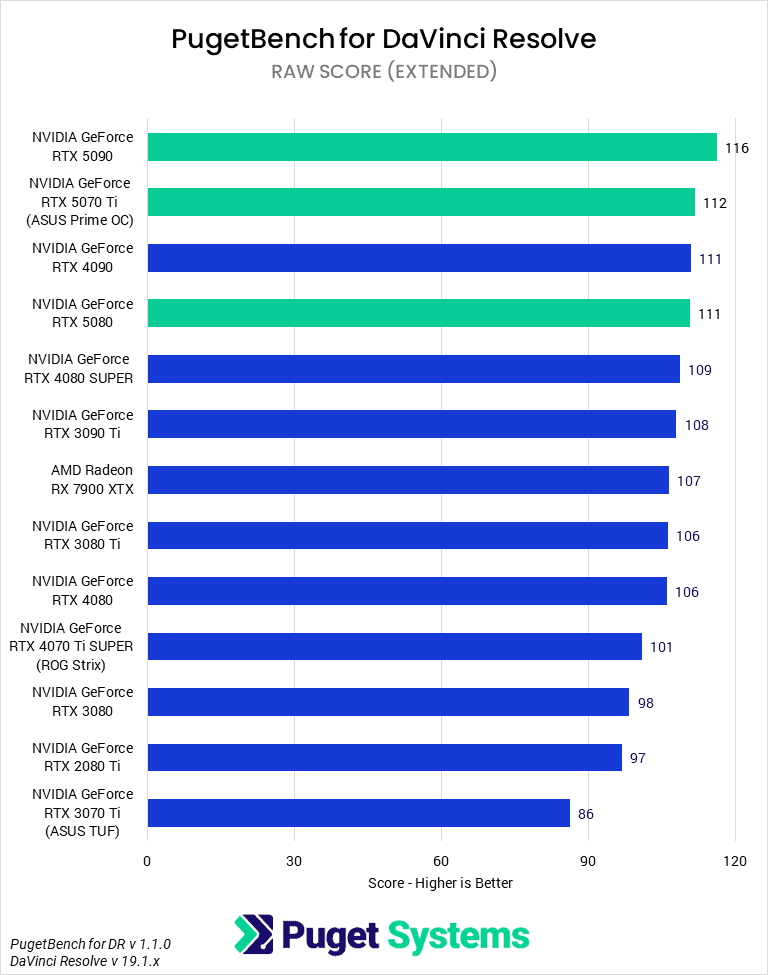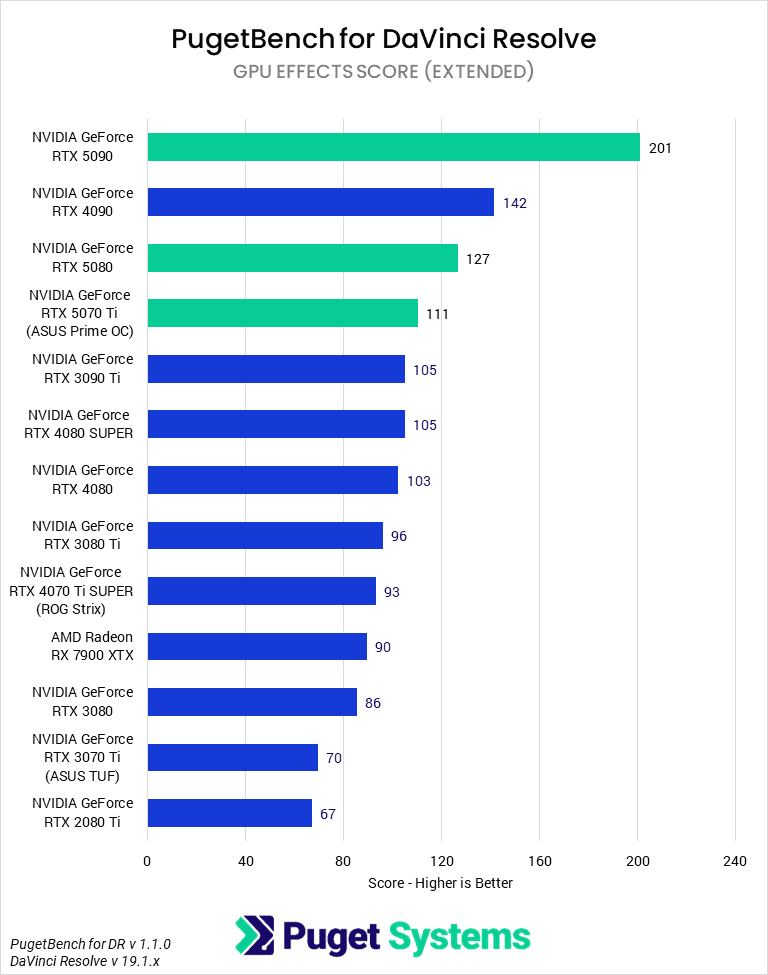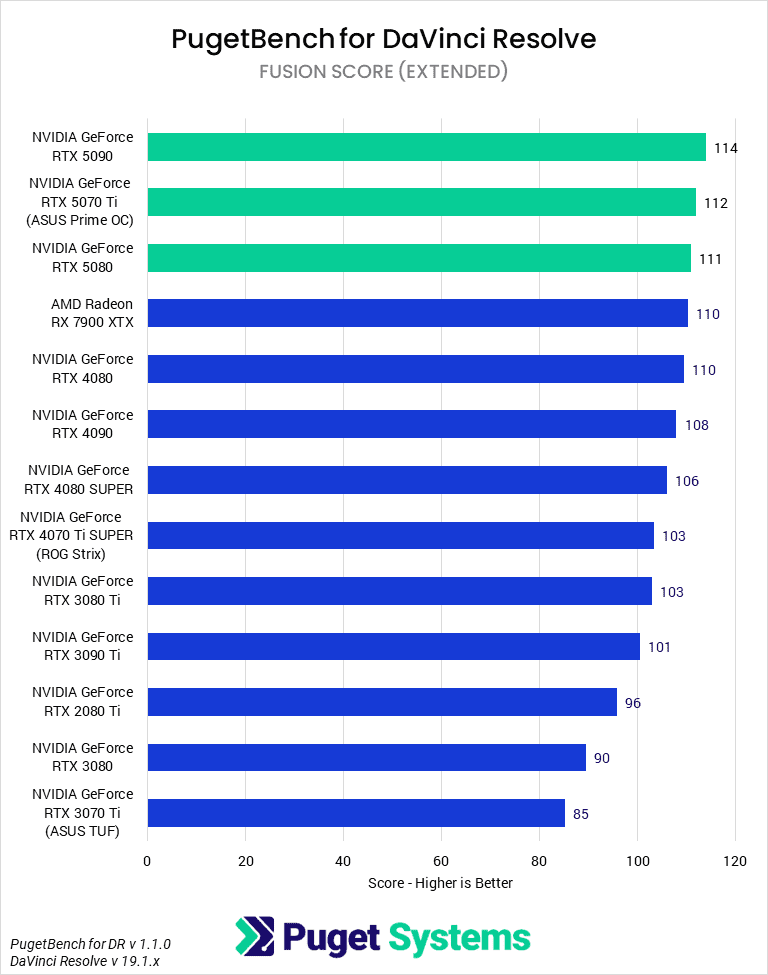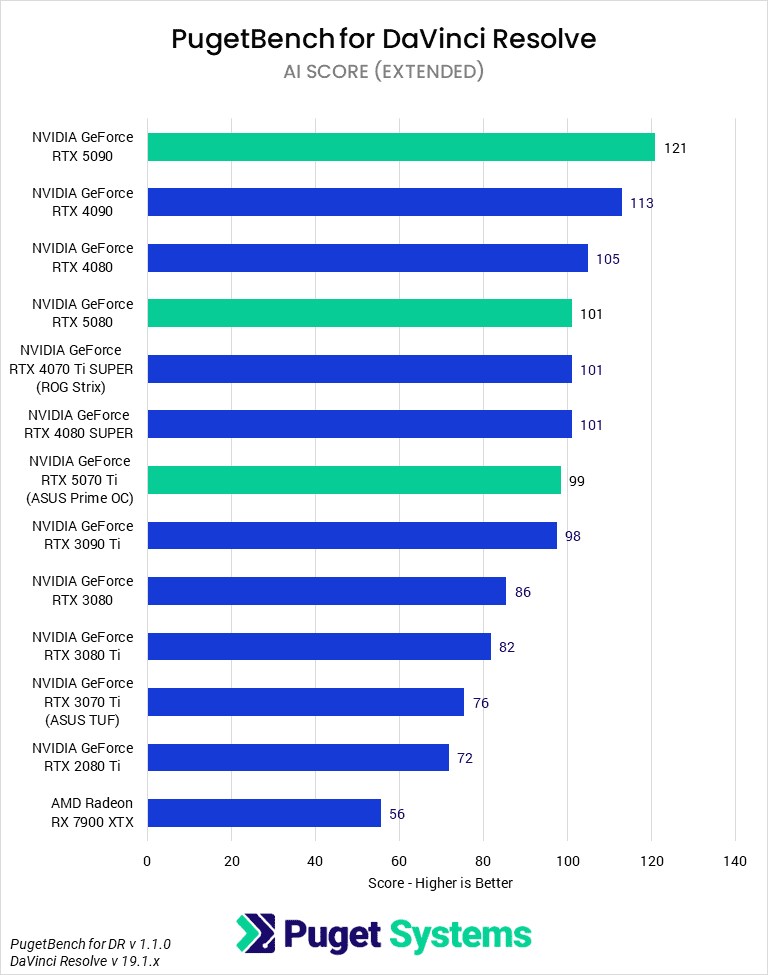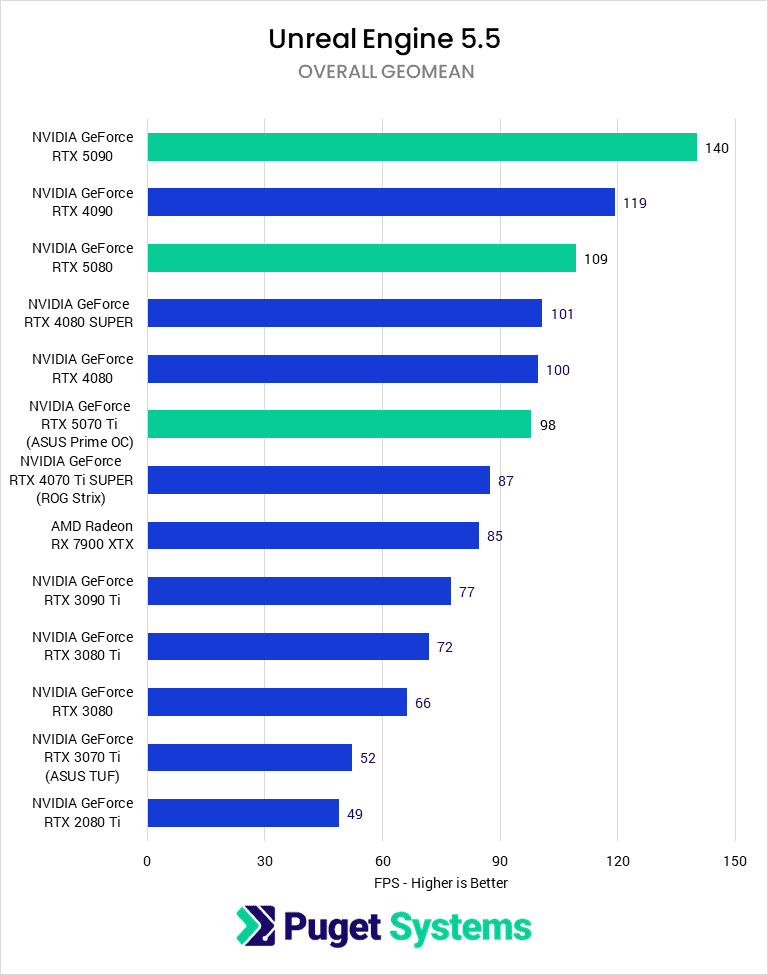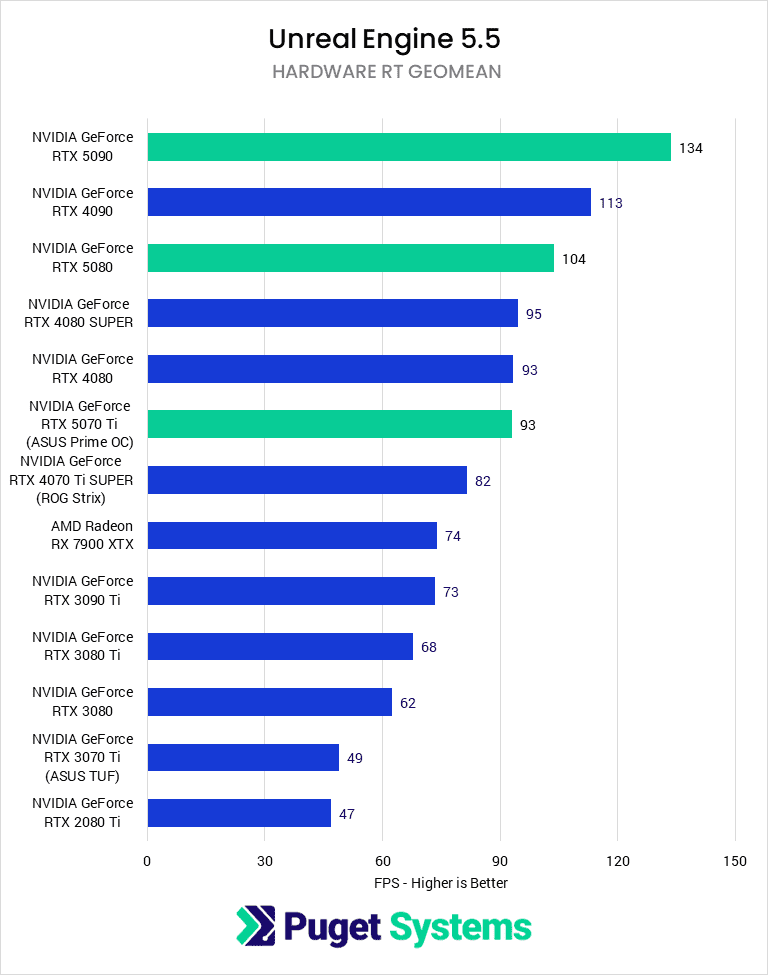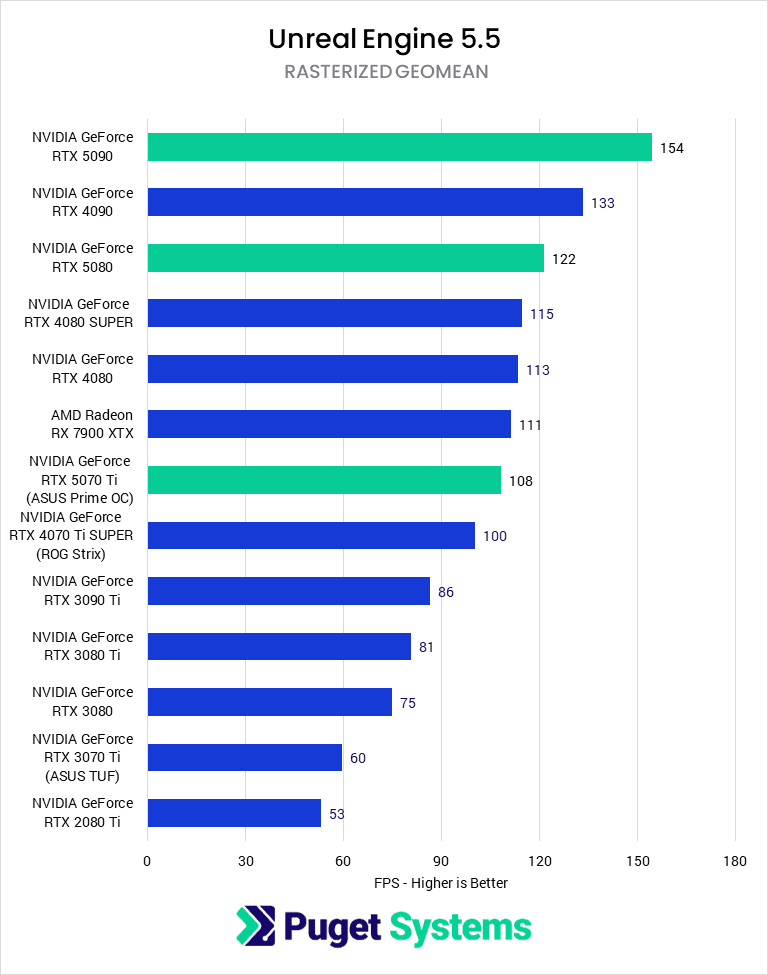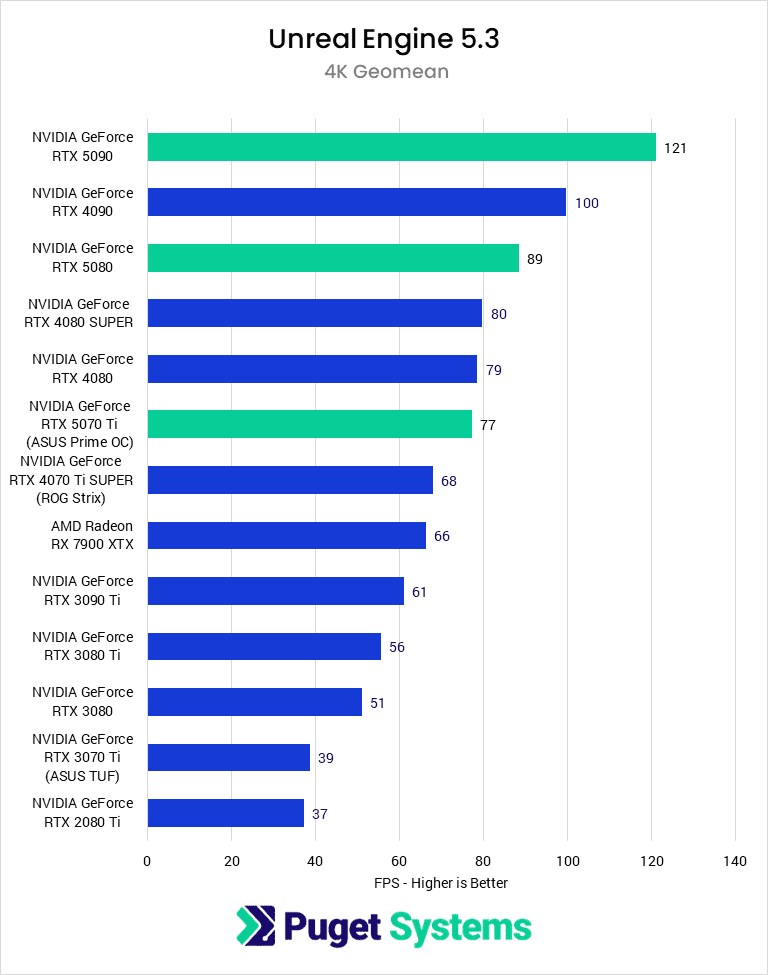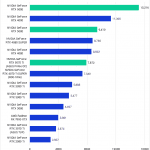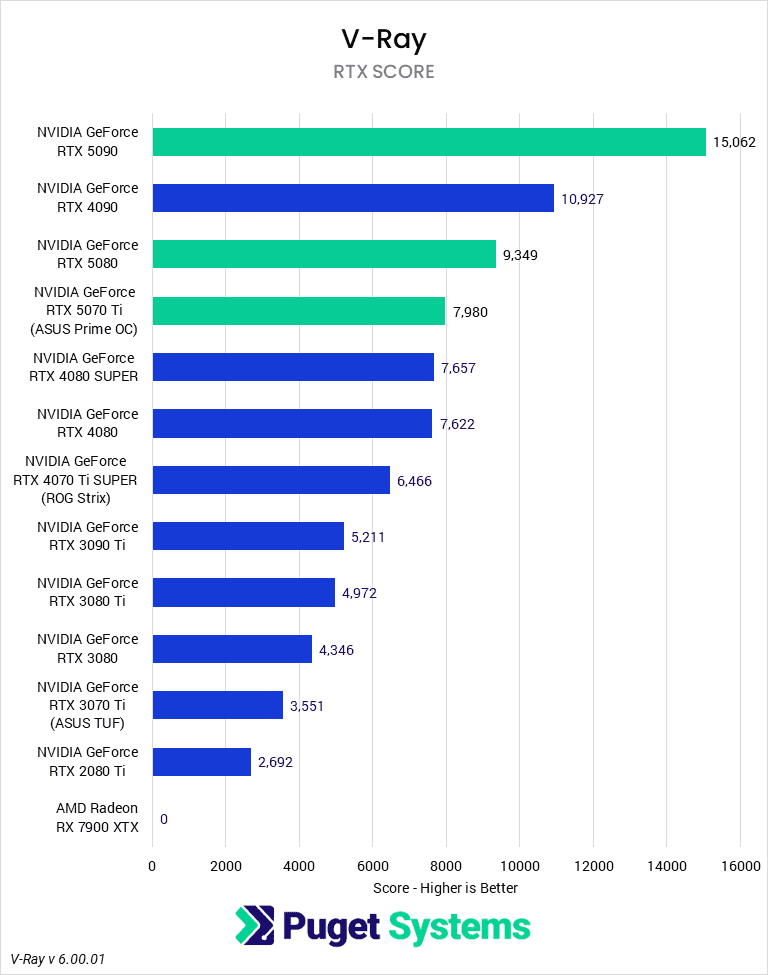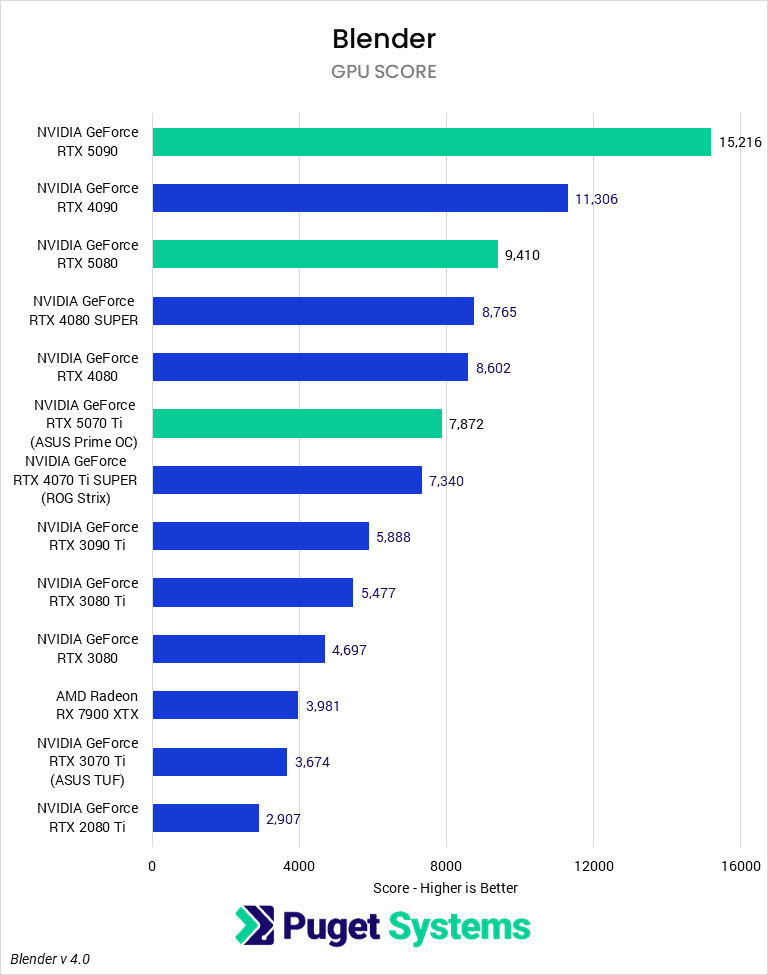Table of Contents
Introduction
At CES, NVIDIA announced its next generation of consumer desktop graphic cards: the GeForce RTX™ 50 series, based on the Blackwell architecture, including the recently launched NVIDIA GeForce RTX™ 5070 Ti. As we covered a few weeks ago in our RTX 5080 review, these GPUs promise improved performance in gaming and content creation and feature more and improved CUDA cores, fourth-generation Ray Tracing and fifth-generation Tensor cores, and the latest NVIDIA NVENC/NVDEC media engines. These hardware updates are packaged alongside a multitude of new technologies like DLSS 4, RTX Mega Geometry, and new NVIDIA Broadcast features.
In this article, we will be reviewing the new midrange NVIDIA GeForce RTX 5070 Ti. Replacing the outgoing NVIDIA GeForce RTX 4070 Ti SUPER, the 5070 Ti is the top of the mid-range graphics card stack. 70-class cards usually are the everyman’s card, offering a good balance between performance and price, though whether the -70 or -70 Ti is a better value seems to change with each generation. As there are no FE models for the 5070 Ti, we will be doing our testing with the ASUS Prime GeForce RTX 5070 Ti OC Edition, a clean-looking 3-fan, 2.5-slot design with a shortened PCB for partial flow-through.
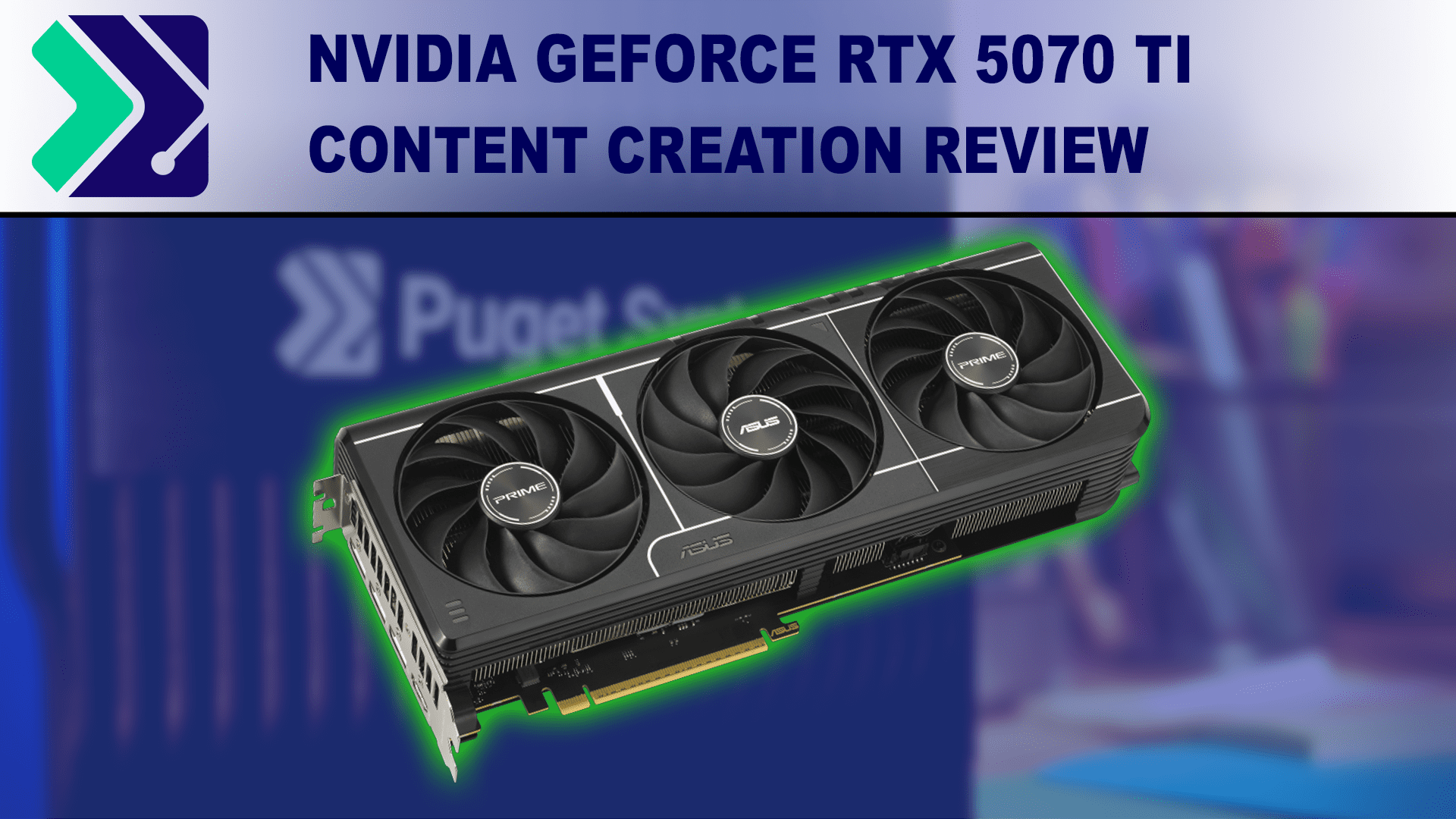
NVIDIA has introduced a number of new features and capabilities with this GPU generation, such as Neural rendering, Mega geometry, and DLSS 4 plus MFG. While we won’t be covering those in this article, we hope to do so in the future. Nonetheless, many of them are exciting for both gamers and professionals, and we continue to be impressed by NVIDIA’s software and feature support. If you are interested in the new features for content creators, we have a blog post available that summarizes everything NVIDIA has announced to date: NVIDIA GeForce RTX 50-Series | Features for Content Creators.
Below, we have listed the most relevant GPU specifications from AMD, Intel, and NVIDIA. For more information, visit Intel Ark, NVIDIA’s 40-series GeForce page, NVIDIA’s 50-series GeForce page, or AMD’s Radeon RX Page.
| GPU Model | MSRP | VRAM | Shader Units | Boost Clock | VRAM Bandwidth | TDP | Release Date |
|---|---|---|---|---|---|---|---|
| NVIDIA GeForce RTX 5090 | $2,000 | 32 GB | 21760 | 2.41 GHz | 1792 GB/sec | 575 W | Jan. 2025 |
| NVIDIA GeForce RTX 3090 Ti | $2,000 | 24 GB | 10752 | 1.86 GHz | 1001 GB/sec | 450 W | Jan. 2022 |
| NVIDIA GeForce RTX 4090 | $1,600 | 24 GB | 16384 | 2.52 GHz | 1001 GB/sec | 450 W | Oct. 2022 |
| NVIDIA GeForce RTX 4080 | $1,200 | 16 GB | 9728 | 2.51 GHz | 736 GB/sec | 320 W | Nov. 2022 |
| NVIDIA GeForce RTX 3080 Ti | $1,200 | 12 GB | 10240 | 1.67 GHz | 912 GB/sec | 350 W | June 2021 |
| AMD Radeon RX 7900 XTX | $1,000 | 24 GB | 6144 | 2.5 GHz | 960 GB/sec | 355 W | Dec. 2022 |
| NVIDIA GeForce RTX 5080 | $1,000 | 16 GB | 10752 | 2.62 GHz | 960 GB/sec | 360 W | Jan. 2025 |
| NVIDIA GeForce RTX 4080 SUPER | $1,000 | 16 GB | 10242 | 2.55 GHz | 736 GB/sec | 320 W | Jan. 2024 |
| NVIDIA GeForce 2080 Ti | $1,000 | 11 GB | 4352 | 1.55 GHz | 616 GB/sec | 250 W | Sept. 2018 |
| NVIDIA GeForce RTX 4070 Ti SUPER | $800 | 16 GB | 8448 | 2.61 GHz | 706 GB/sec | 285 W | Jan. 2024 |
| NVIDIA GeForce RTX 5070 Ti | $750 | 16 GB | 8960 | 2.45 GHz | 896 GB/sec | 300 W | Feb. 2025 |
| NVIDIA GeForce RTX 4070 SUPER | $600 | 12 GB | 7168 | 2.48 GHz | 504 GB/sec | 220 W | Jan. 2024 |
| NVIDIA GeForce RTX 3070 Ti | $600 | 8 GB | 6144 | 1.77 GHz | 608 GB/sec | 290 W | May. 2021 |
| NVIDIA GeForce RTX 5070 | $550 | 12 GB | 6144 | 2.51 GHz | 672 GB/sec | 250 W | Coming March |
| Intel Arc B580 | $250 | 12 GB | 2560 | 2.67 GHz | 456 GB/sec | 190 W | Dec. 2024 |
Much like we saw in our RTX 5080 review, the RTX 5070 Ti offers a much more modest increase in GPU specifications over the 4070 Ti SUPER than the 5090 did over the 4090. In particular, we see the same 16 GB of VRAM as the 4070 Ti SUPER, supported by a 27% improvement in the throughput of the memory bus and a 6% increase in CUDA cores alongside proportional increases in specialized compute hardware like RT Cores and Tensor Cores. Despite a slightly lower boost clock of 2.45 GHz vs the 4070 Ti SUPER’s 2.61 GHz, the new card still draws 15 W more, for a TDP of 300 W even.
We continue to be pleased by the 16 GB of VRAM on this class of card, combined with NVIDIA’s work this generation to improve memory bandwidth and increase GPU cache (which went up by 33% compared to the 4070 Ti SUPER). Additionally, pricing the 5070 Ti $50 below the 4070 Ti SUPER sets a good precedent, although MSRP on a model that will only be produced by AIB partners (there is no FE variant of the 5070 Ti) is rarely ever seen by consumers. We usually expect some amount of price inflation around launch due to high demand and low supply, but the lack of a first-party MSRP model may mean 5070 Tis are less price-competitive with the rest of the 50-series cards.
Test Setup
Test Platform
| CPUs: AMD Ryzen™ 9 9950X |
| CPU Cooler: Noctua NH-U12A |
| Motherboard: ASUS ProArt X670E-Creator WiFi BIOS Version: 2604 |
| RAM: 2x DDR5-5600 32GB (64 GB total) |
| PSU: Super Flower LEADEX Platinum 1600W |
| Storage: Samsung 980 Pro 2TB |
| OS: Windows 11 Pro 64-bit (26100) Power Profile: Balanced |
GPUs
Benchmark Software
| Lightroom Classic 13.1 – PugetBench for Lightroom Classic 0.96 |
| Premiere Pro 25.1.0 – PugetBench for Premiere Pro 1.1.0 |
| After Effects 25.2 Beta – PugetBench for After Effects 0.98-beta |
| DaVinci Resolve 19.1 – PugetBench for DaVinci Resolve 1.1.0 |
| Topaz Video AI 6.0.3.0 |
| Unreal Engine 5.5 |
| V-Ray 6.00.01 |
| Blender 4.0 |
For our GPU testing, we have shifted to an AMD Ryzen 9 9950X-based platform from our traditional Threadripper platform. The 9950X has fantastic all-around performance in most of our workflows and should let the video cards be the primary limiting factor where there is the possibility of a GPU bottleneck. This means the results are more comparable to our recent Intel Arc B580 review but less so to our past GPU reviews. However, we are doing our best to test a variety of past GPUs over the course of our RTX 50-series reviews, so we should have a lot of updated results in the near future. For testing, we used the latest available GPU drivers, though as we are re-using data from our previous 50-series testing in this review, we do have a few different drivers in the mix; we have not seen large performance differences between them. We tested everything on the “balanced” Windows power profile, while Resizeable BAR and “Above 4G Decoding” were enabled for every GPU as well.
In this article, our primary focus will be the new 5070, so we tested it against the most comparable cards from the last few generations: the RTX 4070 Ti SUPER, RTX 4070 SUPER, and RTX 3070 Ti. This is in addition to all the cards we tested in our RTX 5090 review, so we still have the RTX 2080 Ti and RX 7900 XTX results as well. We think that the 4070 Ti SUPER is the best comparison from the last generation, and although it is now more comparable to a (non-Ti) 70-class card, the 3070 Ti occupies the same relative place in the product stack from two generations back.
As we mentioned previously, there is no Founders Edition model available for the 5070 Ti. We typically prefer the FE variants as they provide the most consistency across our testing while also retailing at MSRP and lacking any factory overclocking. When those aren’t available, we instead prefer to go with a card we are selling from one of our AIB partners, such as ASUS. For this article, we used the ASUS Prime GeForce RTX 5070 Ti OC Edition. Additionally, for similar reasons, we used an ASUS ROG Strix GeForce RTX 4070 Ti SUPER. We have been generally impressed with the quality and reliability of ASUS’ cards and use them extensively in our own systems and in past testing.
In terms of applications, the new NVIDIA Blackwell cards have some lingering compatibility issues at present as we await developers’ integration of the new CUDA 12.8 and TensorRT 10.8 toolkits. As a result, the RTX 50-series of graphics cards is not supported in Redshift (Cinebench) or Octanebench—though the latest version of Octane renderer does support them—and has performance issues in V-Ray CUDA rendering. Due to this, we have slightly fewer results than is typical for our GPU reviews: PugetBench for Premiere Pro, After Effects, DaVinci Resolve, and Lightroom Classic, as well as Unreal Engine, V-Ray, and Blender.
Raw Results Tables
We choose our benchmarks to cover many workflows and tasks to provide a balanced look at the application and its hardware interactions. However, many users have more specialized workflows. Recognizing this, we like to provide individual results for benchmarks as well. If a specific area in an application comprises most of your work, examining those results will give a more accurate understanding of the performance disparities between components. Otherwise, we recommend skipping over this section and focusing on our more in-depth analysis in the following sections.
Photography: Lightroom Classic
One of the more frequent requests we get for software testing is Adobe’s Lightroom Classic. Although we have a benchmark for the application, at present, it tests relatively few GPU-accelerated features and so is typically a lower priority for us during GPU reviews. Nonetheless, we understand that even seeing things like GPU-accelerated image export times can be useful in purchase decisions for heavy LRC users, so we do our best to include Lightroom testing where possible. Additionally, we hope to have a revamped Lightroom Classic benchmark finished later this year, which should include many more tests and be more in line with modern Lightroom workflows.
In terms of overall scores (Chart #1), the 5070 Ti is very slightly ahead of the 4070 Ti SUPER and just behind the 4080 SUPER. It manages to score well ahead of the two generations-old 3070 Ti, but that 30-series card performed anomalously badly compared to everything else we tested (even the older RTX 2080 Ti), and we are not 100% confident in its results. This is unsurprising since, as noted above, most of the tests are unaccelerated.
However, moving on to the primary GPU-accelerated portion of the test, image exporting (Chart #2), we see much more differentiation between models. In particular, the 5070 Ti scores 2% ahead of the 4070 Ti SUPER but is 10% faster than even the 3090 Ti, the fastest of the 30-series cards. One thing of interest we noticed is that, for both 40 and 50-series cards, the -90 class cards tended to perform worse than the -80 and -70 class cards. We are unsure what to make of that.
Overall, we would recommend the 5070 Ti as a solid card for Lightroom Classic, especially if you are on a 30-series or older GPU. However, pricing will really dictate whether or not it is worth it over a 40-series card or other 50-series cards. If you are interested in seeing more results, all of the raw results are in the Tables above.
Video Editing: Adobe Premiere Pro
In our benchmark for Adobe’s Premiere Pro, the new NVIDIA GeForce 5070 Ti leads the 4070 Ti SUPER by 8.5% and the 3070 Ti by 29%, nearly matching the 5080. Although not a massive lead over the last gen part, an 8.5% increase is actually fairly good for the Overall Score in Premiere, as much of it isn’t GPU-accelerated, and the application hasn’t yet been updated to take full advantage of the next-generation NVENV/NVDEC media engines.
In our first subtest, looking at performance with LongGOP/Interframe codecs (Chart #2), the lead extends to 16% over the 4070 Ti SUPER, although the 5070 Ti performs relatively worse when compared to the 3070 Ti, with a smaller yet solid 24% lead. We expect that these leads will only grow as support for the updated NVENC/NVDEC hardware actualizes.
Echoing our reviews of prior 50-series cards, when working with RAW (Chart #3) and Intraframe (Chart #4) codecs, we see no real performance advantage over the 4070 Ti SUPER. As Intraframe codecs are CPU-based, we expect all the GPUs to perform identically, but we do see differentiation over the 3070 Ti in RAW tests, where the 5070 Ti enjoys a 34% performance lead.
Our final category of tests in Premiere Pro is GPU-based Effects (Chart #5). As you would expect, these tests are highly sensitive to GPU compute capabilities, so the new 5070 Ti outperforms the 4070 Ti by 11% and the 3070 Ti by 64%. When considered in the context of the other results, this makes the 5070 Ti a fine, if uninspiring, upgrade from a last-gen 4070 Ti SUPER but a large upgrade from the 3070 Ti. Of course, the 3070 Ti did cost $150 MSRP less at launch, and we expect most 5070 Tis will cost well north of $750. We think that the 5070 Ti is generally more compelling for Premiere Pro use than the 5080 unless the additional NVDEC engine of the 5080 ends up being particularly relevant to LongGOP performance.
Motion Graphics: Adobe After Effects
Though traditionally a CPU-based application, After Effects has added 3D capabilities that rely heavily on GPU acceleration. We recently updated our Pugetbench for After Effects benchmark to test these capabilities, and we are excited to be able to include After Effects in our GPU reviews.
Overall, the 5070 Ti scores 8% higher than the 4070 Ti SUPER and 20% higher than the 3070 Ti. Of course, two of our subscores, 2D (Chart #2) and Tracking (Chart #4), are principally CPU-bound, so we see no real difference in them. However, in 3D workflows (Chart #3), the 5070 Ti extends the leads to 23% and 63% over the 4070 Ti SUPER and 3070 Ti, respectively. These are both great generational and skip-generation uplifts.
For traditional After Effects usage, the graphics card is still largely irrelevant, and a cheaper card is typically preferred. However, if you are looking to explore the new 3D workflows in After Effects, the new 5070 Ti can offer a compelling upgrade over older cards.
Video Editing / Motion Graphics: DaVinci Resolve Studio
As an application, DaVinci Resolve tends to be more sensitive to GPU performance than Premiere Pro or After Effects. Additionally, NVIDIA has provided a pre-release version of DaVinci Resolve which is compatible with 50-series cards and properly uses the updated NVENC/NVDEC engines to accelerate additional “flavors” of LongGOP codecs, such as H.265 4:2:2 10-bit.
Overall, this means that the 5070 Ti scores 12% higher than the 4070 Ti SUPER and 40% higher than the 3070 Ti. Much like Premiere Pro, though, there are some subtests that do not effectively make much use of the GPU, such as Intraframe (Chart #3), RAW (Chart #4), and Fusion (Chart #5). In the first of these, GPU has no effect, while in the latter two, the 5070 Ti is about 8-10% faster than the 4070 Ti SUPER and 30% faster than the 3070 Ti.
Our LongGOP tests (Chart #2) are perhaps the most interesting results in DaVinci Resolve, as this includes codec variants that were previously only accelerated with Intel Quick Sync.This allows the 5070 Ti to match the 5080 with a 39% performance advantage over the 4070 to SUPER, extending to 100% over the 3070 Ti.
GPU Effects (Chart #5) and AI (Chart #7) are our final categories of tests. In GPU Effects, the new 50-series card once again flexes its increased compute capabilities to establish a 20% lead over the 4070 Ti SUPER and 59% over the 3070 Ti. However, the 5080 leads the 5070 Ti by 14%, so if you make use of a lot of GPU effects, the 80-class card may be a better value. We continue to see odd behavior in the AI features of DaVinci Resolve, with the 5070 Ti merely performing on par with the 4070 Ti SUPER. This still allows it to outperform the 3070 Ti by 30%, but we definitely hope future app or driver updates improve the neural engine performance in Resolve.
Topaz Video AI
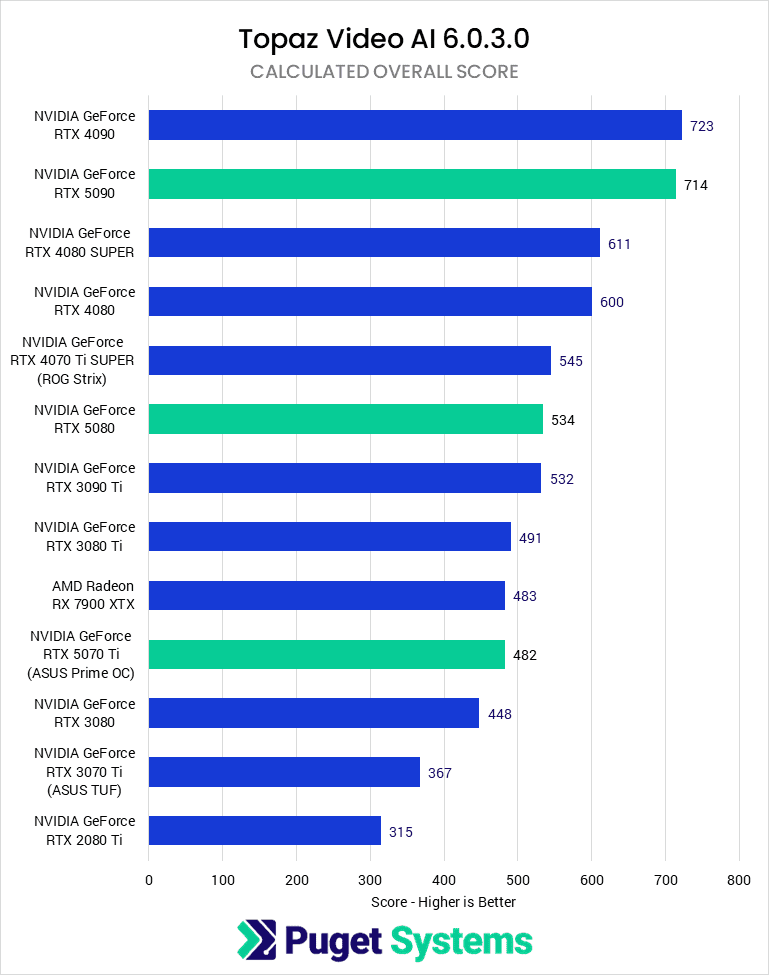
Topaz Video AI is an application that uses AI models to upscale lower-resolution video to a higher-resolution output or low framerate to a higher framerate. We use the built-in benchmark to test performance across all of the included models at both 1080P and 4K and then combine those together into a singular overall score.
Unfortunately, Topaz Video AI has yet to be updated to fully enable 50-series support, so performance is disappointing compared to last-gen hardware. The RTX 5070 Ti performs on par with the 7900 XTX and 3080 Ti, making it slower than the 4070 Ti SUPER by 8% and 31% faster than the 3070 Ti. We would not recommend a 50-series card for Topaz or if you use Topaz in your day-to-day work until the software is updated.
Game Dev / Virtual Production: Unreal Engine
Our Unreal Engine benchmark combines several scenes at varying resolutions and enabled features (e.g., Ray tracing) to see how various common factors affect GPU performance. We combine those FPS results together to get composite scores. Here, we decided to pull out Ray-tracing and Rasterized scenes as individual sub-scores to see how the new RT cores perform.
The Overall FPS (Chart #1) has the 5070 Ti performing on par with a 4080 or 4080 SUPER. It has an average FPS 13% higher than the 4070 Ti SUPER and 88% higher than the 3070 Ti. Much like the rest of the 50-series cards, we see little relative change between ray-traced and rasterized performance, except that, in rasterized rendering, we found the 7900 XTX to jump ahead of the 5070 Ti. Once again, the 5070 Ti is a great upgrade from the 30-series, but much less necessary if you already have a 4070 Ti SUPER.
Rendering: V-Ray & Blender
For offline, GPU-based rendering, we could only test with two of our usual four benchmarks. At present, the RTX 5070 Ti has only experimental support in Redshift 2025.13 (but no compatibility with Cinebench 2024, which uses the Redshift renderer) and support in the OctaneRenderer 2025.1-beta 2 (but not in OctaneBench); as such, we were not able to test with either. Additionally, there is currently a known issue with CUDA rendering in V-Ray, resulting in low performance. We expect that this will be fixed as the implementation of the CUDA 12.8 toolkit is rolled out to applications, but it is definitely a note of caution for early adopters of the 50-series.
In V-Ray RTX rendering (Chart #1), the RTX 5070 Ti scores 23% higher than the 4070 Ti SUPER and 125% higher than the 3070 Ti. This places it above the 4080 and 4080 SUPER, behind only the other 50-series cards and the RTX 4090. This is a great result and definitely makes the 5070 Ti a compelling upgrade to even 40-series owners in V-Ray. The 5070 Ti is a bit less impressive in Blender, with only a 7% lead over the 4070 Ti SUPER, although it still leads the 3070 Ti by 114%.
How good is the NVIDIA GeForce RTX 5070 Ti for Content Creation?
Overall, the RTX 5070 Ti seems to provide moderately better performance than the 4070 Ti SUPER while offering better features at a nominally reduced price. However, we have reservations about assuming that any models will actually be available at MSRP, which can quickly erode any advantages the card has over last-gen options or even the RTX 5080. The top-end midrange card can’t typically afford to cost more than the starting price without escaping into the high-end and losing its value proposition. However, if it is available for around MSRP, or all the 50-series cards are similarly elevated in cost, then the 5070 Ti does offer the same 16 GB of VRAM for $250 less than the 5080.
In video editing and motion graphics, the RTX 5070 Ti is about 10% faster than the RTX 4080 SUPER and 20-30% faster than the 3080 Ti. Some standout areas, such as 3D performance in After Effects, saw gains more than double those. DaVinci Resolve is largely the same, with the standout areas being the improved LongGOP processing and GPU Effects, but otherwise modest performance improvements. This is essentially the same as we saw with the RTX 5080.
In rendering applications, the 5070 Ti manages better, with a 10-20% lead over the 4080 SUPER, nearly twice the performance of the 3080 Ti. This is definitely a performance jump that may be worth upgrading for even from the 40-series card, and it offers great value for those using older generation cards. However, there is still the lingering issue of compatibility and performance quirks, so we would recommend buying with caution or holding off for a bit before committing to a 5070 Ti for a rendering system. We are currently maintaining a list of known issues in content creation applications that you can check in on to see when these are resolved.
NVIDIA’s new GeForce RTX 5070 Ti is a solid mid-tier GPU that promises great performance and features for the price. However, the lack of an FE model or guaranteees of MSRP AIB cards may make it cost more than it is worth. If you are currently on a 30-series card or older and aren’t looking to break the bank, this might be the best card currently out there for professional use.
If you need a powerful workstation to tackle the applications we’ve tested, the Puget Systems workstations on our solutions page are tailored to excel in various software packages. If you prefer to take a more hands-on approach, our custom configuration page helps you to configure a workstation that matches your exact needs. Otherwise, if you would like more guidance in configuring a workstation that aligns with your unique workflow, our knowledgeable technology consultants are here to lend their expertise.




